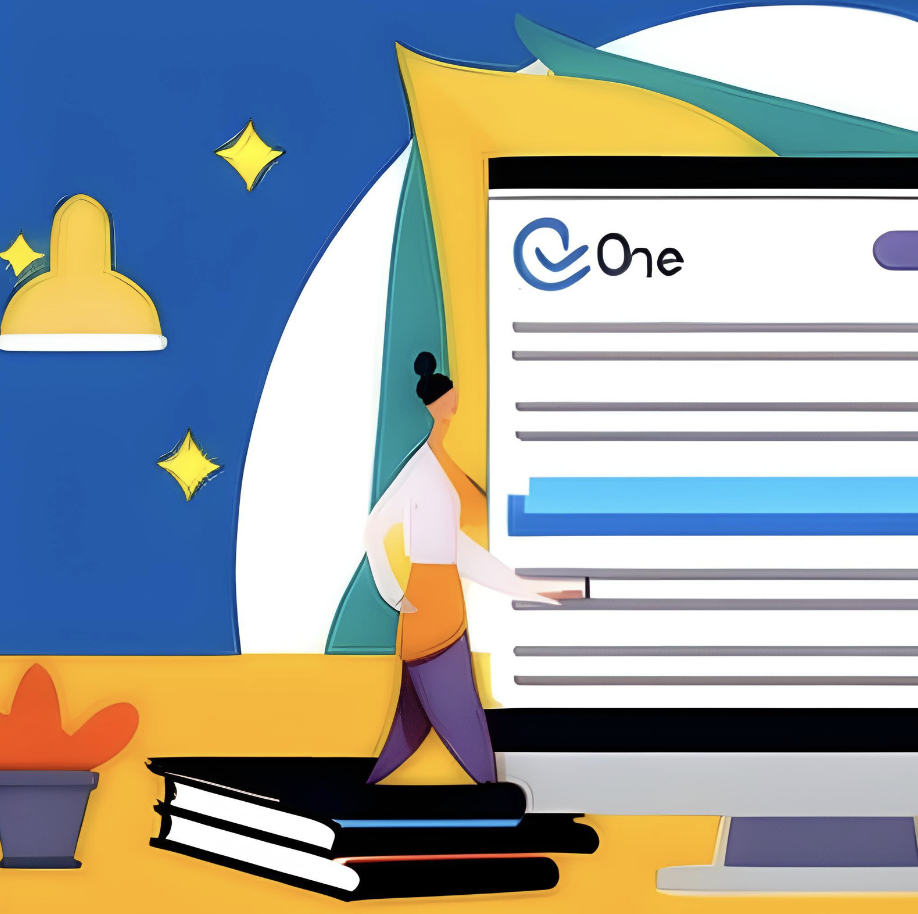Website redesign refers to the process of revamping and updating the visual design, layout, content, structure, and functionality of a website. It’s more than just a facelift; it’s about enhancing user experience, improving performance, and aligning the site with current business goals and industry standards.
The time it takes to redesign a website can vary widely depending on various factors, such as the scope of the project, complexity, and stakeholder involvement. However, a standard timeframe for a comprehensive website redesign is approximately 9 weeks. This includes planning, design, development, content migration, and testing phases. Utilizing a structured approach and a reliable platform can help streamline the process and meet this timeline.
It’s crucial to note that these 9 weeks are often broken down into different stages, each with its own set of tasks and milestones. For instance, the initial weeks may be dedicated to planning and strategy, followed by the design and development phases. The latter part of the timeline is usually reserved for testing, quality assurance, and any final tweaks before launch. Effective communication and collaboration among team members can significantly contribute to adhering to this 9-week schedule.

Importance of Keeping a Website Up-to-Date
In the ever-changing digital landscape, keeping a website up-to-date is crucial for maintaining relevance, engagement, and trust with users. An outdated website can lead to poor user experience, lower search engine rankings, and a decrease in conversions. Regular updates and redesigns ensure that the website remains competitive and meets the evolving needs of users and search engines.
Common Reasons for Redesigning a Website
Outdated Design: Aesthetic trends change, and an outdated design can make a website look unprofessional.
Poor Performance: Slow loading times and broken links can frustrate users.
Lack of Mobile Responsiveness: With the increasing use of smartphones, a mobile-friendly design is essential.
Rebranding: When a company undergoes rebranding, the website must reflect the new brand identity.
Low Conversion Rates: If the website is not converting visitors into customers, a redesign may be necessary to optimize conversion paths.
Overview of the Factors Influencing the Time Required
The time required to redesign a website depends on various factors, including:
Scope of the Redesign: A complete overhaul takes longer than minor updates.
Complexity of Features: Integrating advanced features and functionalities adds to the timeline.
Content Creation and Migration: Developing new content and transferring existing content can be time-consuming.
Stakeholder Involvement: The number of people involved and their responsiveness can impact the timeline.
Testing and Quality Assurance: Ensuring that the redesigned website works flawlessly across different devices and browsers requires thorough testing.
Understanding the Scope of Redesign

Minor Changes vs. Major Overhaul
Understanding the scope of the redesign is crucial in determining the time and resources required. Minor changes may include updating images, fixing broken links, or tweaking color schemes. These can usually be completed quickly. On the other hand, a major overhaul involves a complete redesign of the website’s structure, layout, content, and functionality. This is a more complex and time-consuming process.
Assessing the Current State of the Website
Before embarking on a redesign, it’s essential to assess the current state of the website. This includes analyzing the site’s performance, user experience, SEO ranking, and alignment with the brand’s goals. Tools like Google Analytics can provide valuable insights into user behavior and areas that need improvement. Understanding what works and what doesn’t will guide the redesign process and help avoid unnecessary changes.
Identifying Goals and Objectives
Clearly identifying the goals and objectives of the redesign will ensure that the project stays on track and meets the desired outcomes. Whether the aim is to increase traffic, improve conversion rates, enhance user experience, or reflect a rebranding effort, having clear and measurable goals will guide the decision-making process. It also helps in selecting the right tools and platforms for the redesign, such as Grigora, which offers customizable solutions tailored to specific needs.
Design Phase
Selecting Themes and Templates
The design phase begins with selecting themes and templates that align with the brand’s identity and goals. Whether you’re using Grigora’s extensive library of customizable themes or creating something from scratch, this step sets the visual tone for the website. It’s essential to choose a design that resonates with the target audience and enhances the user experience.
Custom Design vs. Pre-made Solutions
One of the critical decisions in the design phase is choosing between custom design and pre-made solutions. A custom design allows for complete control and uniqueness but often requires more time and resources. On the other hand, pre-made solutions, such as those offered by Grigora, can significantly reduce the time required for design, as they come with ready-to-use elements that can be tailored to fit the brand.
Time Required for Design Approvals
The time required for design approvals can vary depending on the complexity of the design and the number of stakeholders involved. It includes the time taken for revisions, feedback, and final approval.
Development Phase
Coding and Development
The coding and development stage is where the design comes to life. This phase involves translating the visual elements into functional components. Whether it’s a simple update or a complete overhaul, the development process requires careful planning and execution.
Integrating New Features and Functionalities
Integrating new features and functionalities is often a critical part of a redesign. Whether it’s adding e-commerce capabilities, social media integration, or other advanced features, this step can add complexity to the development process. Grigora’s platform offers various plugins and integrations that can simplify this process and save time.
Mobile Responsiveness
In today’s digital landscape, mobile responsiveness is a must. Ensuring that the website provides an optimal viewing experience across various devices is essential. Grigora’s themes are designed with mobile responsiveness in mind, allowing for a smooth transition between different screen sizes.
Testing and Quality Assurance
Before launching the redesigned website, testing and quality assurance are vital. This step ensures that all elements work as intended and that the site is free from bugs and errors.
Content Migration and Optimization with Grigora
Transferring Existing Content
When redesigning a website, transferring existing content is often necessary. This process involves moving all the current information, images, videos, and other media to the new design. Grigora’s platform offers efficient tools to facilitate this migration, ensuring that no data is lost and that the transition is smooth.
Creating New Content
A redesign may also require creating new content to align with the updated look and feel of the site. Whether it’s writing new blog posts, updating product descriptions, or crafting engaging landing pages, Grigora’s content management system can assist in organizing and managing this new content.
SEO Considerations
SEO (Search Engine Optimization) considerations are vital during a redesign. Ensuring that the new site maintains or improves its search engine rankings requires careful planning and execution. Grigora’s SEO tools can guide this process, offering insights and recommendations to optimize the site for search engines.
Time Required for Content Approval
The time required for content approval can vary depending on the organization’s structure and the complexity of the content. Coordinating with stakeholders, reviewing content, and making necessary revisions can add to the timeline. Grigora’s collaboration features can streamline this process, allowing for real-time feedback and quicker approvals.
User Experience (UX) Considerations
User Testing and Feedback
User experience (UX) is at the heart of any successful website redesign. User testing and feedback are essential to understand how visitors interact with the site and what improvements can be made.
Iterative Design Adjustments
Redesigning a website is often an iterative process. This means making continuous adjustments based on user feedback and testing results. Iterative design ensures that the site evolves to meet user needs and expectations, leading to higher satisfaction and engagement.
Accessibility Compliance
Accessibility compliance is a legal and ethical obligation for many websites. Ensuring that the site is accessible to all users, including those with disabilities, is a critical consideration in the redesign process.
Launch and Post-Launch Activities
Preparing for Launch, and Grigora’s To-do List Feature
The launch phase is a critical moment in the redesign process. It requires careful preparation to ensure a smooth transition from the old site to the new one. Grigora’s To-do list feature can be a valuable tool in this phase, helping to organize and track all the necessary tasks, from final checks to coordinating with stakeholders.
Post-Launch Monitoring and Adjustments
Once the site is live, post-launch monitoring becomes essential. This involves tracking user behavior, site performance, and any potential issues that may arise. Adjustments may be needed to fine-tune the site based on real-world usage.
Ongoing Maintenance and Updates
A website is never truly “finished.” Ongoing maintenance and updates are necessary to keep the site fresh, secure, and aligned with evolving business goals. This includes regular content updates, security patches, and technological upgrades.
Factors That Can Delay the Redesign Process

Lack of Clear Objectives
The absence of clear objectives can lead to confusion and misdirection during the redesign process. Without a well-defined goal, the project may drift, causing delays and inefficiencies.
Frequent Changes in Requirements
Frequent changes in the project’s requirements can disrupt the workflow, leading to repeated revisions and extended timelines. This can be a significant source of delay, especially if changes are made late in the process.
Technical Challenges
Encountering unexpected technical challenges can also lead to delays. Whether it’s compatibility issues, coding complexities, or other technical hurdles, these can slow down the development phase.
Stakeholder Delays
Delays from stakeholders, such as late feedback, approval hold-ups, or changes in direction, can also extend the project timeline. Effective communication and alignment with stakeholders are essential to avoid these delays.
Tips for a Smooth and Timely Redesign
Setting Realistic Expectations
A successful redesign starts with setting realistic expectations. Understanding the scope, budget, and timeline is crucial. It helps in aligning the team and stakeholders, ensuring everyone is on the same page.
Effective Communication and Collaboration
Effective communication and collaboration are vital for a smooth redesign process. Regular updates, clear instructions, and open channels for feedback can prevent misunderstandings and delays. Collaborative tools, such as
FAQs
How much does it cost to redesign a website?
The cost of redesigning a website can vary widely based on the scope, complexity, and specific requirements. It can range from a few hundred dollars for minor changes to several thousand for a complete overhaul. Utilizing platforms like Grigora can provide cost-effective solutions.
Can I redesign my website myself?
The cost of redesigning a website can vary widely based on the scope, complexity, and specific requirements. It can range from a few hundred dollars for minor changes to several thousand for a complete overhaul. Utilizing platforms like Grigora can provide cost-effective solutions.
How often should a website be redesigned?
The cost of redesigning a website can vary widely based on the scope, complexity, and specific requirements. It can range from a few hundred dollars for minor changes to several thousand for a complete overhaul. Utilizing platforms like Grigora can provide cost-effective solutions.
What are the signs that my website needs a redesign?
The cost of redesigning a website can vary widely based on the scope, complexity, and specific requirements. It can range from a few hundred dollars for minor changes to several thousand for a complete overhaul. Utilizing platforms like Grigora can provide cost-effective solutions.
Conclusion
Recap of the Key Factors Influencing Redesign Time
Redesigning a website is a multifaceted process that requires careful consideration of various factors. From understanding the scope and setting clear objectives to the design, development, content migration, and user experience considerations, each stage plays a vital role in determining the time required for a successful redesign. Utilizing platforms like Grigora can streamline the process, offering tools and support to efficiently manage the redesign.
Emphasizing the Importance of Planning and Flexibility
Planning is paramount in ensuring a smooth and timely redesign. Setting realistic expectations, effective communication, and collaboration are essential. Flexibility to adapt to changes and unforeseen challenges is equally important. Leveraging professional services and platforms like Grigora can provide the flexibility and resources needed to navigate the complexities of redesigning a website.



